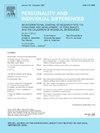中国大学生正念各方面与攻击性成分的纵向关系:一个交叉滞后的面板网络分析
IF 2.6
2区 心理学
Q1 PSYCHOLOGY, SOCIAL
引用次数: 0
摘要
尽管之前的研究已经证明了正念和攻击之间的负相关,但对于这种关系的本质并没有达成共识,因为很少有研究同时探索了正念和攻击的维度。本研究采用交叉滞后面板网络分析,对中国大学生正念各方面与攻击性成分之间的纵向关系进行了研究。方法对2242名中国大学生(Mage = 19.44, SD = 1.25,女生占69%)进行人口统计学自述、正念五面问卷和中文版Buss-Perry攻击行为问卷调查。在两个时间点收集数据。结果在控制社会人口学信息后,观察面在网络中表现出最高的期望外影响(out-EI),描述性和非反应性表现出最高的期望外影响(in- ei)。此外,研究结果还显示了三个最强的桥接边:“观察→敌意”、“无反应→敌意”和“无反应→愤怒”,这意味着某些正念方面可能是攻击成分的预测因子。结论综上所述,这些结果提示从业者在实际应用中可以考虑调整正念干预策略的顺序。强调显性行为,如肢体攻击和言语攻击,可能会提高中国大学生的干预效果。本文章由计算机程序翻译,如有差异,请以英文原文为准。
Longitudinal relationships between facets of mindfulness and components of aggression among Chinese college students: A cross-lagged panel network analysis
Background
Despite previous research has demonstrated negative associations between mindfulness and aggression generally, no consensus exists on the nature of this relationship, as few studies have simultaneously explored the dimensions of mindfulness and aggression. This study applied cross-lagged panel network analysis to estimate the longitudinal relationships between facets of mindfulness and components of aggression among Chinese college students.
Methods
A total of 2242 Chinese college students (Mage = 19.44, SD = 1.25; 69 % girls) completed self-reported questionnaires on demographics, the Five Facet Mindfulness Questionnaire, and the Chinese version of Buss-Perry Aggression Questionnaire. Data were collected at two times point.
Results
After controlling for sociodemographic information, the observing facet exhibited the highest out-expected influence (out-EI) in the network, with describing and non-reactivity showing the highest in-expected influence (in-EI). In addition, the results indicated three strongest bridging edges: “observing→hostility”, “non-reactivity→hostility”, and “non-reactivity→anger”, implying that certain mindfulness facets may serve as predictors of aggression components.
Conclusions
Overall, these results suggested that practitioners may consider adjusting the sequences of mindfulness-based interventions strategies in practical application. Greater emphasis on explicit behaviors, such as physical and verbal aggression, may enhance intervention efficacy among Chinese college students.
求助全文
通过发布文献求助,成功后即可免费获取论文全文。
去求助
来源期刊

Personality and Individual Differences
PSYCHOLOGY, SOCIAL-
CiteScore
8.50
自引率
4.70%
发文量
577
审稿时长
41 days
期刊介绍:
Personality and Individual Differences is devoted to the publication of articles (experimental, theoretical, review) which aim to integrate as far as possible the major factors of personality with empirical paradigms from experimental, physiological, animal, clinical, educational, criminological or industrial psychology or to seek an explanation for the causes and major determinants of individual differences in concepts derived from these disciplines. The editors are concerned with both genetic and environmental causes, and they are particularly interested in possible interaction effects.
 求助内容:
求助内容: 应助结果提醒方式:
应助结果提醒方式:


